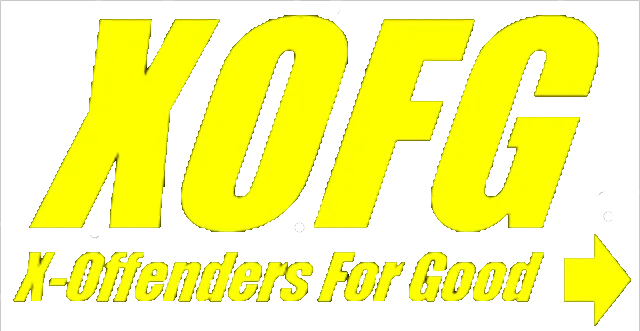Kurt’s Battle to Overcome Heroin Addiction
Once trapped in a 13-year spiral of heroin and despair, Kurt Michael Pereira is now rebuilding his life with faith, and guiding others toward freedom and purpose.
By Sarah Tan
Kurt’s Battle to Overcome Heroin Addiction
Once trapped in a 13-year spiral of heroin and despair, Kurt Michael Pereira is now rebuilding his life with faith, and guiding others toward freedom and purpose.
By Sarah Tan
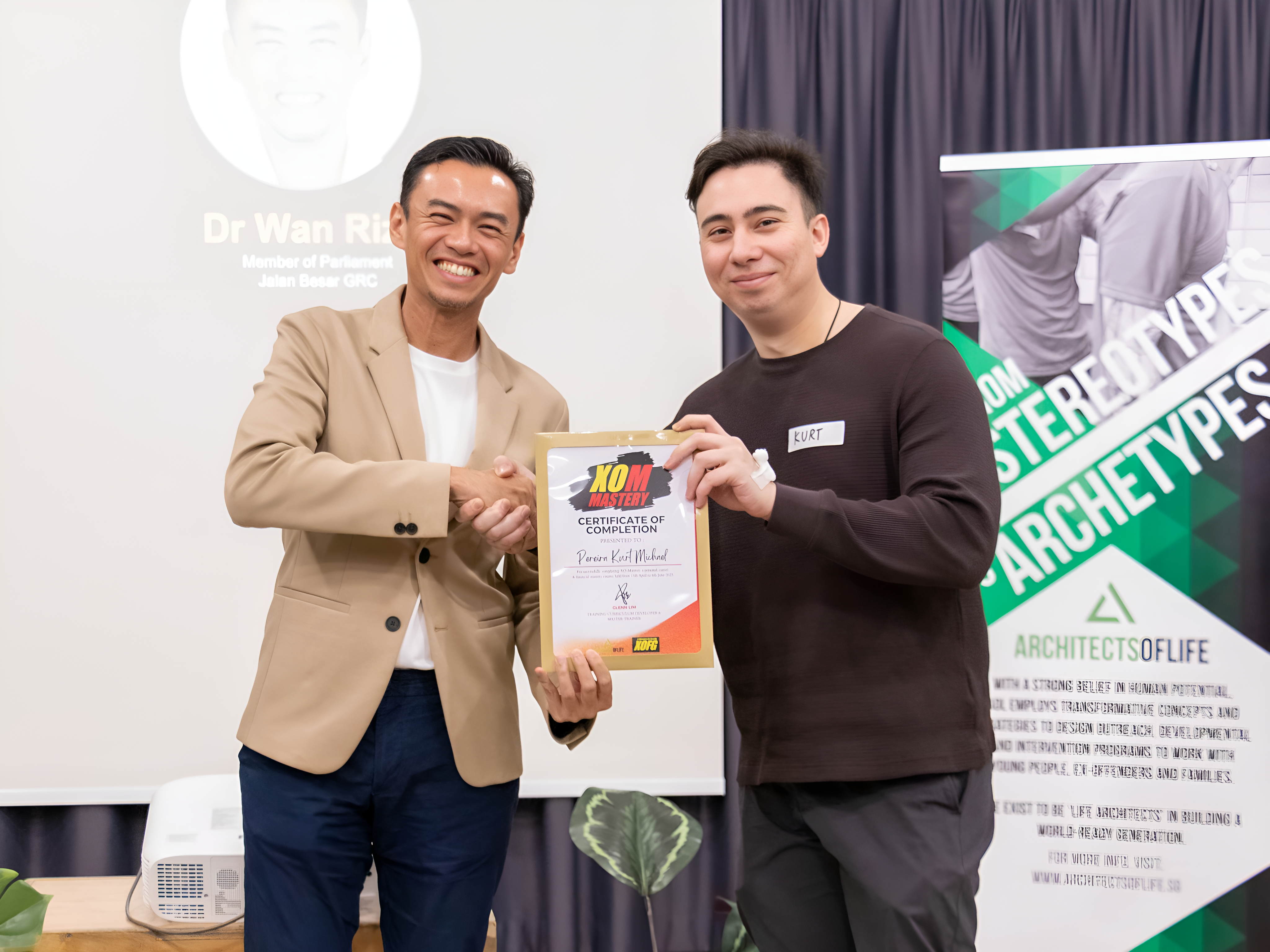
Kurt receiving his XO Mastery certificate of completion from Dr Wan Rizal, Member of Parliament for Jalan Besar GRC.
“Drugs can take anyone,” Kurt told me.
Indeed, Kurt did not fit the stereotypical mold of a teenager who became a drug addict.
He had a blessed childhood. He has an elder brother and a younger brother and sister. His family was close and often drove up to Malaysia to stay in a resort for a few nights. He studied in one of the top Primary schools in Singapore.
Even though he found the school system stressful, he made a good bunch of friends who journeyed with him.
Kurt loved street soccer and made many friends through the sport. He developed a particularly strong connection with his friend Gab. Even though Gab studied in a different school, they bonded over common interests in music, clothes and a love of dark humour. Kurt was first introduced to glue sniffing while spending substantial time with Gab and his friends.
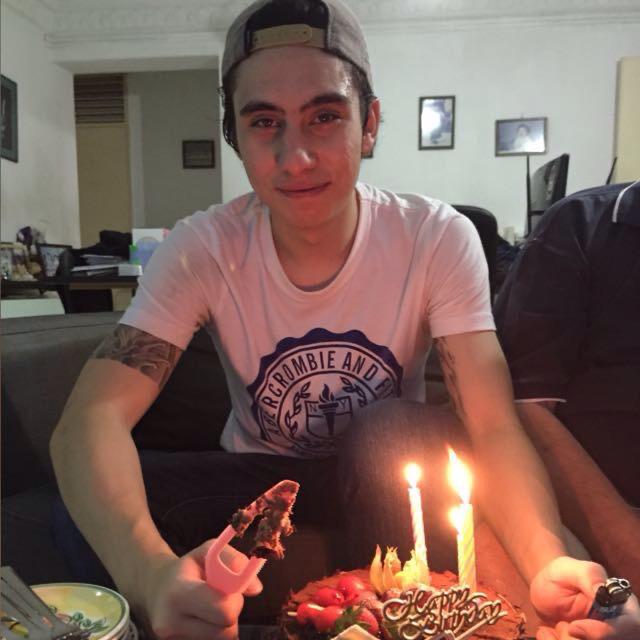
In this emotionally raw snapshot, Kurt is seen celebrating his birthday.
Despite being aware of the adverse effects of inhaling glue, Kurt gave it a try. He was quickly gripped by the strange, trance-like feeling. Kurt was hooked. Little did he know this would lead him down a 13-year cycle of addiction, abstinence, and regressions.
Curious about how other substances would make them feel, Kurt and Gab went on to inhale Ketamine.
After experiencing a stronger euphoric rush, they were spurred on to try anything they could get their hands on- marijuana, nimetazepam, ecstasy, crystal, methamphetamine and eventually, heroin.
He was obsessed with his next dose. He left school at the end of the year, failing his ’N’ levels, being marked “absent” for all his subjects. To fund his addiction, he lied, cheated and stole.
It was not long before he was arrested for the thefts and then tested positive for heroin. Within a month of being out on bail, Kurt was caught for possession of drug-paraphernalia.
Again, he tested positive for drugs. The judge sentenced Kurt to months of probation where he had to stay in The Hiding Place (THP).
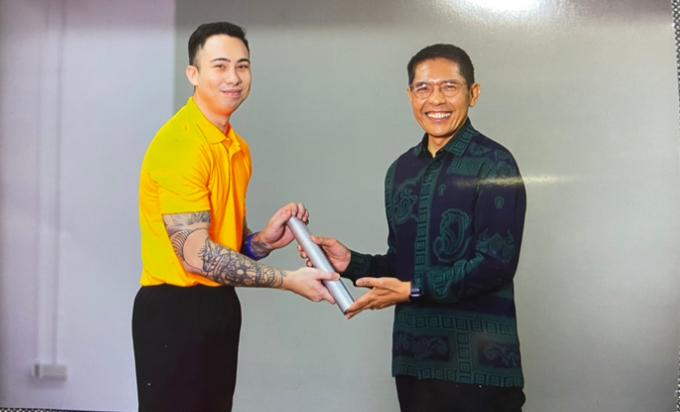
Kurt (left) receives a certificate from a community leader during a recognition ceremony.
The Hiding Place is a Christian Halfway House for recovering drug addicts, ex-offenders and youth delinquents. Pastor Phillip Chan and his wife, who ran the place, showered the residents with love and care.
After much persuasion from the late Mrs. Chan, Kurt took his ‘O’ levels examination as a private candidate.
There were limited study resources available and apart from a volunteer tutor who visited Kurt weekly, much of the preparation rested on Kurt’s independent learning.
When he passed the exams and secured a Diploma Course in Business Management in a polytechnic, he felt hopeful for a brighter future. He started to believe in himself.
Progress was evident when Kurt left THP and started school at the polytechnic. Even though he felt anxious going to school, he made a good bunch of friends who had a positive influence in his new journey of self-betterment. Kurt kept himself busy with school and work. He spent his free time with his girlfriend.
The days of inhaling drugs seemed far gone and he had distanced himself from that company, apart from Gab. “My life is finally in order and I am on the right path,” thought Kurt.
However, life’s challenges are unyielding, dealing him with a series of cruel setbacks.
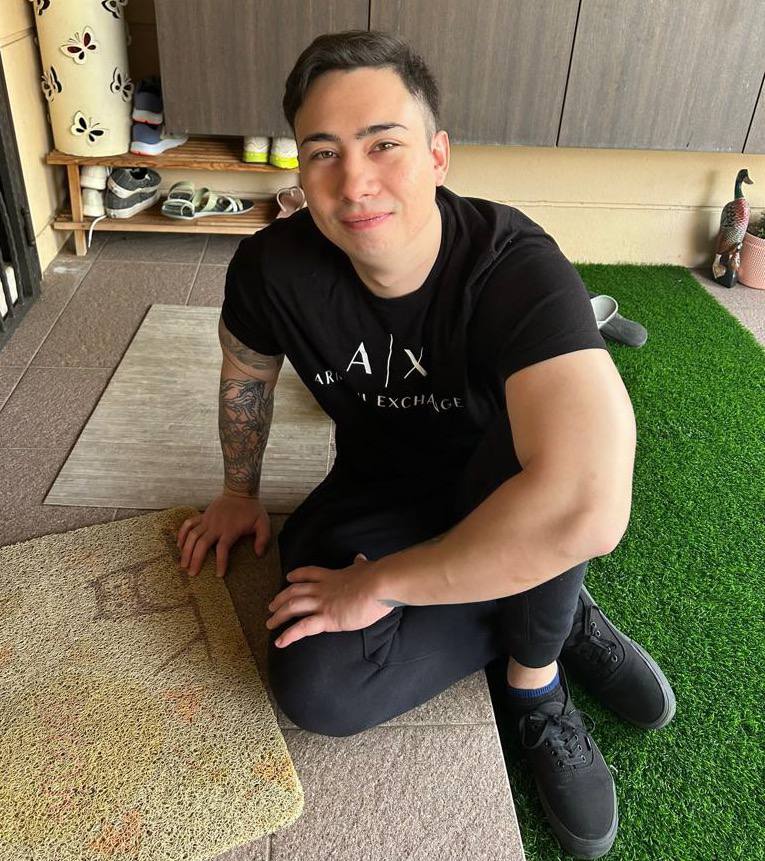
Now clean and rebuilding his life with purpose, Kurt enjoys a peaceful moment at home.
During his second year in school, he was diagnosed with Sarcoma Cancer, which required him to have multiple surgeries, followed by chemotherapy.
He endured the treatment and coped with school concurrently, even though there were times when he felt too weak to attend class. There were a few occasions where he vomited during lessons.
A few months after his diagnosis, his parents filed for a divorce, claiming they did not love each other anymore.
Despite having his hands full, Kurt acted as the mediator between his parents when they fought about the terms of divorce. He was deeply hurt when his parents pushed the responsibility of his medical bills back and forth between themselves.
He wanted to draw strength from his girlfriend, only to have her leave him at his lowest. Kurt was heartbroken and in the depths of despair.
Kurt found comfort and solace in Gab’s company. One night, after multiple nights of drinking, instead of heading home, Kurt followed Gab when the latter went to get his drug fix. After four years of sobriety, Kurt relapsed and plummeted deep into addiction, taking heroin every day.
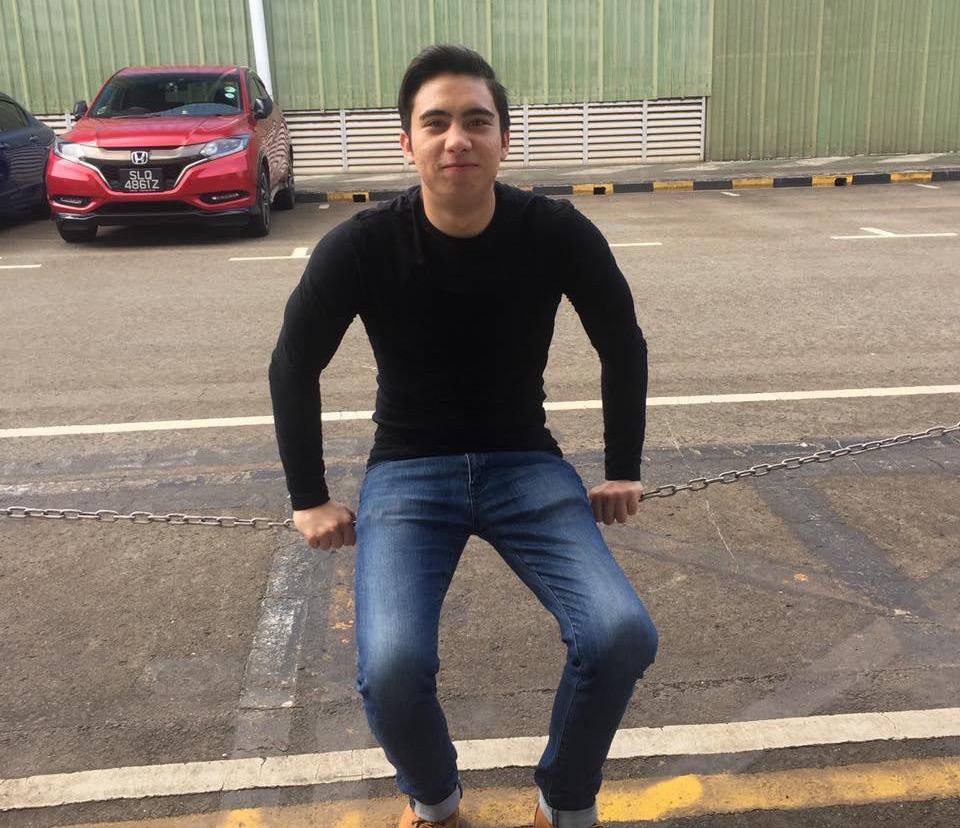
Taken during a period of transition, this photo captures Kurt in a quiet, reflective moment outdoors.
One night, when Kurt was alone at home, he injected drugs into his veins and swallowed a handful of pills with alcohol.
From what Kurt knew, this cocktail of substances was sufficient to kill any person several times. His heart beat softer, his chest tightened and his vision blurred as he slipped into unconsciousness.
Kurt woke up in the psychiatric ward in the Institution of Mental Health (IMH). His brother had returned home to find Kurt motionless and called for help.
At the IMH, he was diagnosed with depression, anxiety and addiction disorder. The concoction of drugs resulted in a severe withdrawal and he suffered from post suicide attempt trauma.
“I was so depressed and so broken down because I felt that I have failed at everything in life and even when I tried to kill myself, I failed too. I felt like a big time loser.” Kurt revealed.
“I thought I would not try that again but I would let myself die slowly.”
“It did hit me that so many people out there are trying to survive but here I am, messing up my life.”
Kurt remarked that he was selfish. But how much of these thoughts were his own?
“Drugs are like a double edged sword. They give you a sense of relief but they come with an agenda. They change the way you think, making you feel totally pessimistic. They come to steal, kill and destroy.” Kurt described, quoting a biblical verse referring to the devil.

Dressed sharply in a black blazer and seated in a modern workspace, he exudes quiet strength and focus.
The next few years saw Kurt trying to move forward with life, while trying to break free from his addiction. He finished his final semester at the polytechnic, completed his internship before finally graduating. He found a new girlfriend, Lavinia.
But drugs continued to be his coping mechanism. He was accepted into the Singapore Institute of Technology (SIT) for further studies but he realised he could not live without heroin and convinced himself that he could be a “functional” addict.
At the SIT, Kurt could not cope with the stress of school work and took a leave of absence. He felt like a defeated hard core addict. He took a part time job as a food delivery rider but all the earnings went into feeding his drug addiction.
He would sleep through the mornings, work in the afternoons and at the end of the day, he would be intoxicated. He realised his health was taking a beating, yet ironically, he would take more drugs to mitigate the side effects of poor health and undernourishment. Kurt felt powerless against the addiction and hopeless about his life.
But Kurt was not alone as Gab was not any better off. They would see each other frequently, casually passing comments such as “Can’t believe that you are still alive, bro”.
One morning, Kurt was woken up by eight Central Narcotics Bureau officers at his home and he was sentenced to DRC again. The withdrawals from the cold turkey treatment at the DRC was excruciating.
He prayed that God would show him mercy and end his life. Yet, he was hardly remorseful.
He felt the officers who arrested him had no right to intervene in his own chosen path of self destruction. He looked forward to being released so that he could return to chase the high from drugs once more. He was determined to give up on his life, just as he thought everyone must have.

“Kurt (far right) shares a light-hearted moment with friends during a community event.”
Kurt was wrong. Two weeks into his incarceration, he received a long letter from Lavinia. Rather than reprimanding Kurt for what he did, Lavinia’s letter was full of support and encouragement for him.
She wholeheartedly believed that Kurt could overcome his addiction. She also highlighted his strengths to him and said she would wait for his release.
Kurt was taken aback, in a good way. He was used to people walking out on him at his worst. He was also no fool, seeing how many people had promised to wait for their partners to be released, only to have left in the end.
But deep inside, he wanted to trust Lavinia. He wanted to believe that he could overcome his drug addiction. Hope grew day by day as Lavinia continued writing to Kurt and showing up for all the days of visitation.
She reaffirmed to him of her love and of how strong he can be.
“It provided me with a foundation to work towards. At that moment, I felt like I have to decide to move in her direction for a better life or just continue to destroy everything good that comes my way…”
At the same time, Kurt received a piece of devastating news. Gab had passed away from drug overdose. Even though Kurt has courted death, news of someone close to him passing away was sobering. For days, Kurt lost his appetite and sleep, wishing it did not happen and that instead, there would be an alternate reality where Gab overcame his addiction and led a fulfilling life. He was grief-stricken.
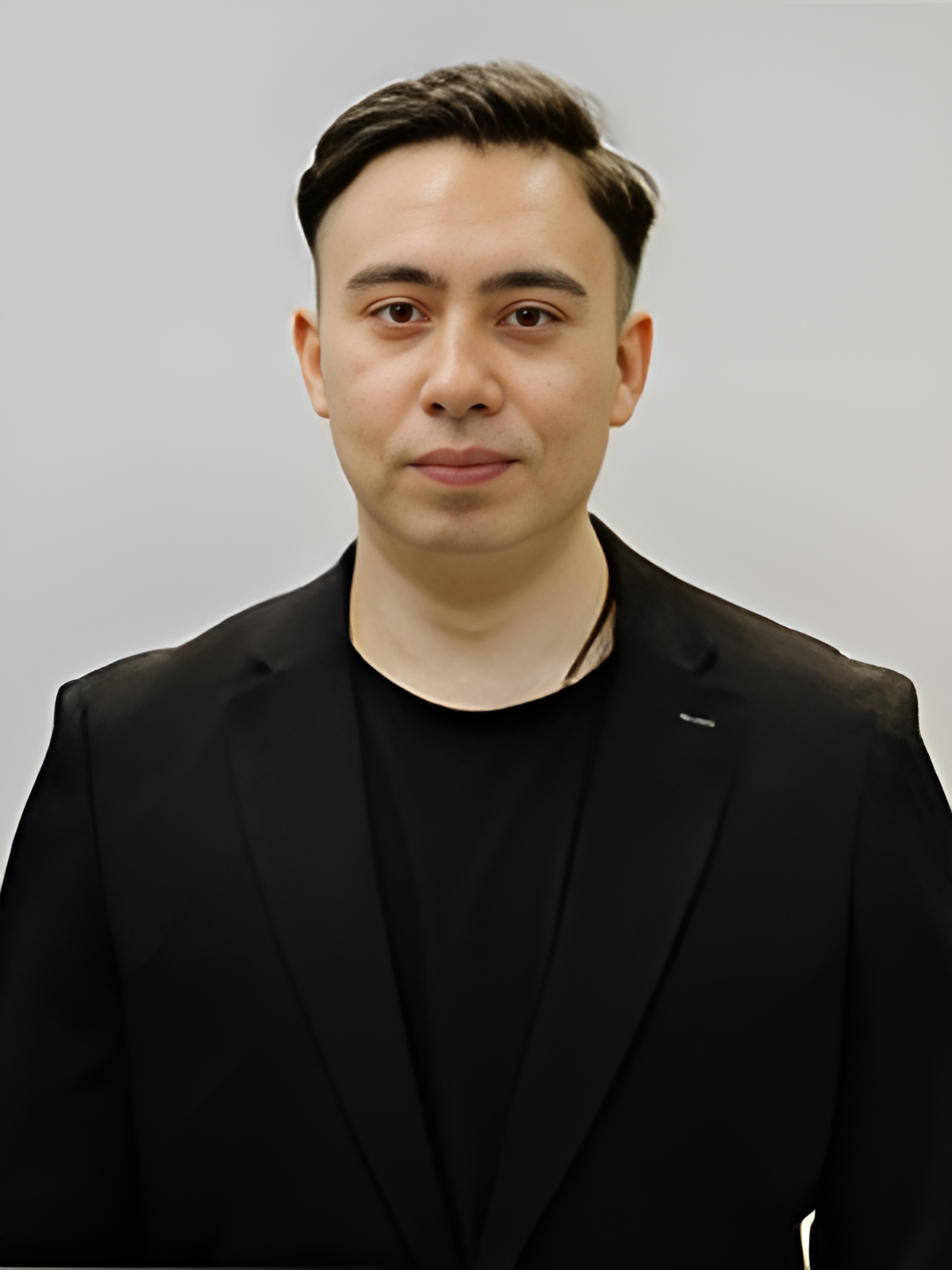
Kurt now stands as a mentor, advocate, and living testimony of redemption.
“It made me realise that is the reality of drugs (if you keep consuming it). You will die, it is just either overdose or through a long, miserable process. It woke me up… As a friend, I am already so affected by his death.
I cannot imagine how his family must have felt… and I cannot imagine how the people close to me, like Lavinia would feel if this happened to me..”
Kurt will never want to put anyone he knows through this anguish. Furthermore, he realised how he has been preserved by God in his previous suicide attempt and how fortunate he was to be alive. Gab and him had taken the same amount of drugs but he was the only one left standing.
“Each time after relapsing, you find that you hit rock bottom and you lose everything and then you wonder, ‘How can I still lose more?’ But you do.” “And I actually want to find out what I can gain instead..”
His mind, heart and soul went through a complete transformation. From the constant craving for the euphoric high from drugs, he grew to resent the narcotic substances and deemed them to be toxic, mind-altering lies. He swore never to touch drugs again.
Kurt realised he needed more than his own sheer willpower and prayed for God’s intervention to help him overcome this overwhelming gripping addiction.
The remaining time in DRC would see Kurt on a journey to a better self, as he sought therapy, taking on projects that lend a hand to the needy and even taking on a ToastMasters Workshop. The world seems like a much bigger place when it does not revolve around drugs and himself.
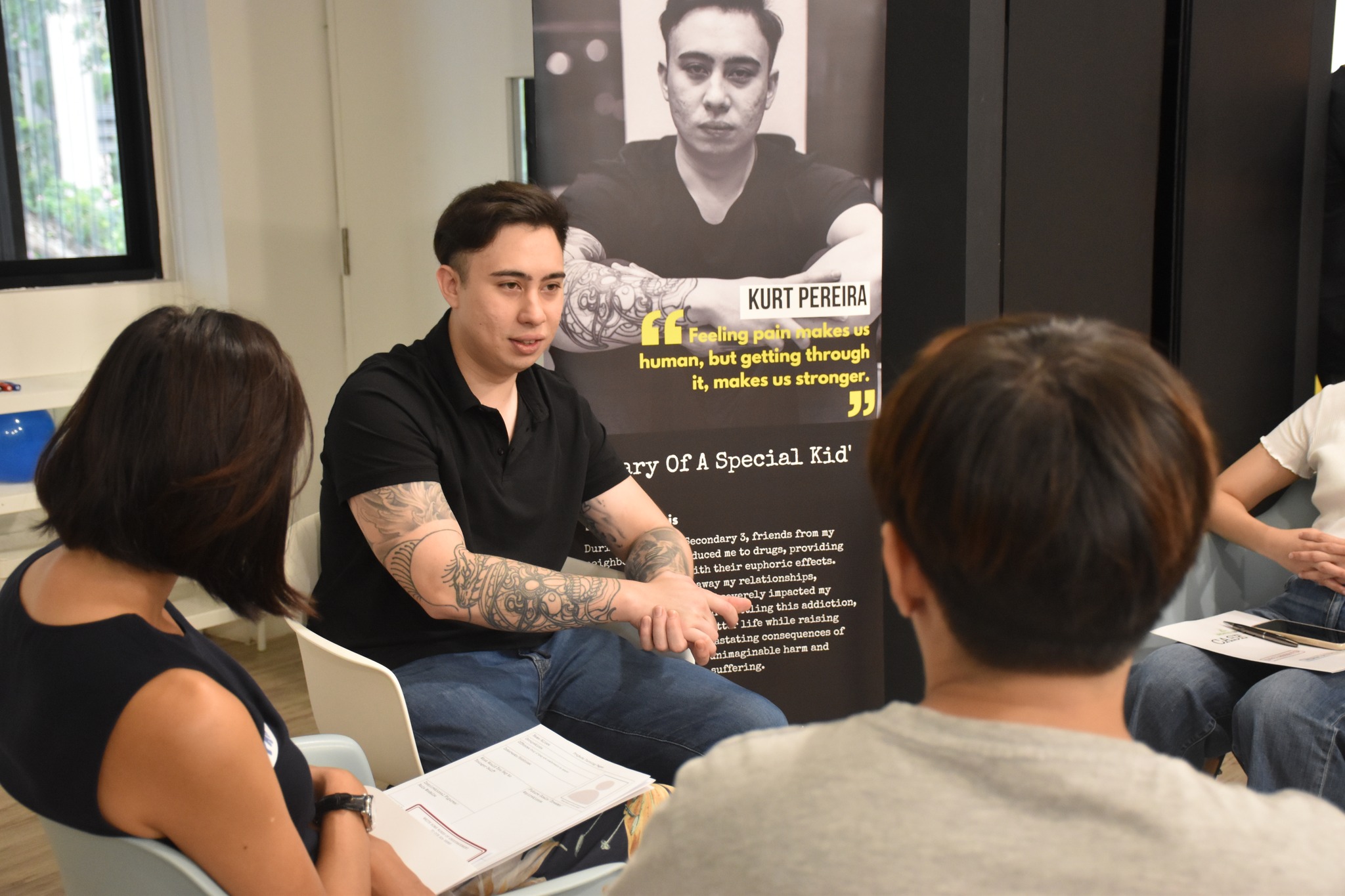
Kurt Pereira participating in a dialogue circle, where personal stories become shared strength.
As part of the CBP reintegration process, Kurt was finally allowed to join the community as he worked, while staying at a supervision centre.
Although there was much anxiety reintegrating back into society, the XOFG (X-offender for good) initiative Kurt signed up for helped him tremendously.
This is currently run by the social enterprise, Architects of Life (AOL). The greatest asset gained is the friends he made in the program.
“The mentors there had been battling addiction and been on the path of sobriety for years. Even after 20 years of abstinence, they still face challenges that a person who would have been sober for a day would face. You look at their lives and you know it is possible. They did not get to where they are now with magic.
Once upon a time, they were like me. And if they can find a way, there is hope (for me).”
Kurt found himself serving for future initiatives, wanting to play a role in deterring others from slipping down the drug spiral. He found his participation to be therapeutic as it serves as a constant reminder not to relapse again.

That is the reason why Kurt stays close to the community of AOL because of their active work in helping people with drug addiction.
“It seems like it is all fun and games until someone loses his or her life. The reality is that it is never fun to begin with.”
Kurt receiving his XO Mastery certificate of completion from Dr Wan Rizal, Member of Parliament for Jalan Besar GRC.
Indeed, Kurt Michael Pereira did not fit the stereotypical mold of a teenager who became a drug addict.
“Drugs can take anyone,” Kurt told me.
Indeed, Kurt did not fit the stereotypical mold of a teenager who became a drug addict.
He had a blessed childhood. He has an elder brother and a younger brother and sister. His family was close and often drove up to Malaysia to stay in a resort for a few nights. He studied in one of the top Primary schools in Singapore.
Even though he found the school system stressful, he made a good bunch of friends who journeyed with him.
Kurt loved street soccer and made many friends through the sport. He developed a particularly strong connection with his friend Gab. Even though Gab studied in a different school, they bonded over common interests in music, clothes and a love of dark humour. Kurt was first introduced to glue sniffing while spending substantial time with Gab and his friends.

In this emotionally raw snapshot, Kurt is seen celebrating his birthday.
Despite being aware of the adverse effects of inhaling glue, Kurt gave it a try. He was quickly gripped by the strange, trance-like feeling. Kurt was hooked. Little did he know this would lead him down a 13-year cycle of addiction, abstinence, and regressions.
Curious about how other substances would make them feel, Kurt and Gab went on to inhale Ketamine.
After experiencing a stronger euphoric rush, they were spurred on to try anything they could get their hands on- marijuana, nimetazepam, ecstasy, crystal, methamphetamine and eventually, heroin.
He was obsessed with his next dose. He left school at the end of the year, failing his ’N’ levels, being marked “absent” for all his subjects. To fund his addiction, he lied, cheated and stole.
It was not long before he was arrested for the thefts and then tested positive for heroin. Within a month of being out on bail, Kurt was caught for possession of drug-paraphernalia.
Again, he tested positive for drugs. The judge sentenced Kurt to months of probation where he had to stay in The Hiding Place (THP).

Kurt (left) receives a certificate from a community leader during a recognition ceremony.
The Hiding Place is a Christian Halfway House for recovering drug addicts, ex-offenders and youth delinquents. Pastor Phillip Chan and his wife, who ran the place, showered the residents with love and care.
After much persuasion from the late Mrs. Chan, Kurt took his ‘O’ levels examination as a private candidate.
There were limited study resources available and apart from a volunteer tutor who visited Kurt weekly, much of the preparation rested on Kurt’s independent learning.
When he passed the exams and secured a Diploma Course in Business Management in a polytechnic, he felt hopeful for a brighter future. He started to believe in himself.
Progress was evident when Kurt left THP and started school at the polytechnic. Even though he felt anxious going to school, he made a good bunch of friends who had a positive influence in his new journey of self-betterment. Kurt kept himself busy with school and work. He spent his free time with his girlfriend.
The days of inhaling drugs seemed far gone and he had distanced himself from that company, apart from Gab. “My life is finally in order and I am on the right path,” thought Kurt.
However, life’s challenges are unyielding, dealing him with a series of cruel setbacks.

Now clean and rebuilding his life with purpose, Kurt enjoys a peaceful moment at home.
During his second year in school, he was diagnosed with Sarcoma Cancer, which required him to have multiple surgeries, followed by chemotherapy.
He endured the treatment and coped with school concurrently, even though there were times when he felt too weak to attend class. There were a few occasions where he vomited during lessons.
A few months after his diagnosis, his parents filed for a divorce, claiming they did not love each other anymore.
Despite having his hands full, Kurt acted as the mediator between his parents when they fought about the terms of divorce. He was deeply hurt when his parents pushed the responsibility of his medical bills back and forth between themselves.
He wanted to draw strength from his girlfriend, only to have her leave him at his lowest. Kurt was heartbroken and in the depths of despair.
Kurt found comfort and solace in Gab’s company. One night, after multiple nights of drinking, instead of heading home, Kurt followed Gab when the latter went to get his drug fix. After four years of sobriety, Kurt relapsed and plummeted deep into addiction, taking heroin every day.

Taken during a period of transition, this photo captures Kurt in a quiet, reflective moment outdoors.
One night, when Kurt was alone at home, he injected drugs into his veins and swallowed a handful of pills with alcohol.
From what Kurt knew, this cocktail of substances was sufficient to kill any person several times. His heart beat softer, his chest tightened and his vision blurred as he slipped into unconsciousness.
Kurt woke up in the psychiatric ward in the Institution of Mental Health (IMH). His brother had returned home to find Kurt motionless and called for help.
At the IMH, he was diagnosed with depression, anxiety and addiction disorder. The concoction of drugs resulted in a severe withdrawal and he suffered from post suicide attempt trauma.
“I was so depressed and so broken down because I felt that I have failed at everything in life and even when I tried to kill myself, I failed too. I felt like a big time loser.” Kurt revealed.
“I thought I would not try that again but I would let myself die slowly.”
“It did hit me that so many people out there are trying to survive but here I am, messing up my life.”
Kurt remarked that he was selfish. But how much of these thoughts were his own?
“Drugs are like a double edged sword. They give you a sense of relief but they come with an agenda. They change the way you think, making you feel totally pessimistic. They come to steal, kill and destroy.” Kurt described, quoting a biblical verse referring to the devil.

Dressed sharply in a black blazer and seated in a modern workspace, he exudes quiet strength and focus.
The next few years saw Kurt trying to move forward with life, while trying to break free from his addiction. He finished his final semester at the polytechnic, completed his internship before finally graduating. He found a new girlfriend, Lavinia.
But drugs continued to be his coping mechanism. He was accepted into the Singapore Institute of Technology (SIT) for further studies but he realised he could not live without heroin and convinced himself that he could be a “functional” addict.
At the SIT, Kurt could not cope with the stress of school work and took a leave of absence. He felt like a defeated hard core addict. He took a part time job as a food delivery rider but all the earnings went into feeding his drug addiction.
He would sleep through the mornings, work in the afternoons and at the end of the day, he would be intoxicated. He realised his health was taking a beating, yet ironically, he would take more drugs to mitigate the side effects of poor health and undernourishment. Kurt felt powerless against the addiction and hopeless about his life.
But Kurt was not alone as Gab was not any better off. They would see each other frequently, casually passing comments such as “Can’t believe that you are still alive, bro”.
One morning, Kurt was woken up by eight Central Narcotics Bureau officers at his home and he was sentenced to DRC again. The withdrawals from the cold turkey treatment at the DRC was excruciating.
He prayed that God would show him mercy and end his life. Yet, he was hardly remorseful.
He felt the officers who arrested him had no right to intervene in his own chosen path of self destruction. He looked forward to being released so that he could return to chase the high from drugs once more. He was determined to give up on his life, just as he thought everyone must have.

Kurt (far right) shares a light-hearted moment with friends during a community event.
Kurt was wrong. Two weeks into his incarceration, he received a long letter from Lavinia. Rather than reprimanding Kurt for what he did, Lavinia’s letter was full of support and encouragement for him.
She wholeheartedly believed that Kurt could overcome his addiction. She also highlighted his strengths to him and said she would wait for his release.
Kurt was taken aback, in a good way. He was used to people walking out on him at his worst. He was also no fool, seeing how many people had promised to wait for their partners to be released, only to have left in the end.
But deep inside, he wanted to trust Lavinia. He wanted to believe that he could overcome his drug addiction. Hope grew day by day as Lavinia continued writing to Kurt and showing up for all the days of visitation.
She reaffirmed to him of her love and of how strong he can be.
“It provided me with a foundation to work towards. At that moment, I felt like I have to decide to move in her direction for a better life or just continue to destroy everything good that comes my way…”
At the same time, Kurt received a piece of devastating news. Gab had passed away from drug overdose. Even though Kurt has courted death, news of someone close to him passing away was sobering. For days, Kurt lost his appetite and sleep, wishing it did not happen and that instead, there would be an alternate reality where Gab overcame his addiction and led a fulfilling life. He was grief-stricken.

Kurt now stands as a mentor, advocate, and living testimony of redemption.
“It made me realise that is the reality of drugs (if you keep consuming it). You will die, it is just either overdose or through a long, miserable process. It woke me up… As a friend, I am already so affected by his death.
I cannot imagine how his family must have felt… and I cannot imagine how the people close to me, like Lavinia would feel if this happened to me..”
Kurt will never want to put anyone he knows through this anguish. Furthermore, he realised how he has been preserved by God in his previous suicide attempt and how fortunate he was to be alive. Gab and him had taken the same amount of drugs but he was the only one left standing.
“Each time after relapsing, you find that you hit rock bottom and you lose everything and then you wonder, ‘How can I still lose more?’ But you do.” “And I actually want to find out what I can gain instead..”
His mind, heart and soul went through a complete transformation. From the constant craving for the euphoric high from drugs, he grew to resent the narcotic substances and deemed them to be toxic, mind-altering lies. He swore never to touch drugs again.
Kurt realised he needed more than his own sheer willpower and prayed for God’s intervention to help him overcome this overwhelming gripping addiction.
The remaining time in DRC would see Kurt on a journey to a better self, as he sought therapy, taking on projects that lend a hand to the needy and even taking on a ToastMasters Workshop. The world seems like a much bigger place when it does not revolve around drugs and himself.

Kurt Pereira participating in a dialogue circle, where personal stories become shared strength.
As part of the CBP reintegration process, Kurt was finally allowed to join the community as he worked, while staying at a supervision centre.
Although there was much anxiety reintegrating back into society, the XOFG (X-offender for good) initiative Kurt signed up for helped him tremendously.
This is currently run by the social enterprise, Architects of Life (AOL). The greatest asset gained is the friends he made in the program.
“The mentors there had been battling addiction and been on the path of sobriety for years. Even after 20 years of abstinence, they still face challenges that a person who would have been sober for a day would face. You look at their lives and you know it is possible. They did not get to where they are now with magic.
Once upon a time, they were like me. And if they can find a way, there is hope (for me).”
Kurt found himself serving for future initiatives, wanting to play a role in deterring others from slipping down the drug spiral. He found his participation to be therapeutic as it serves as a constant reminder not to relapse again.


